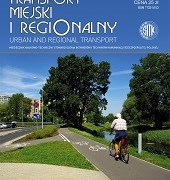Abstract 4/2019
Table of content
Michał Wolański – Amendments to the Law on public collective transport
Rafał Grzegorzewski – Operational, schedule and economic efficiency of separated bus lines
Andrzej Rudnicki – Contribution to the discussion on the problems of the development of rail public transport in big cities – the Krakow case
Klaudia Dobija – Comparison of the effectiveness of electromobility forms on the example of trolleybus line A in Tychy
Abstracts
Michał Wolański
Amendments to the Law on public collective transport
Abstract: The article presents the regression of public transport in rural areas in Poland and systematizes attempts to prevent this regress, taken in subsequent regulations and their projects. The regression of public transport in rural areas results from the growing availability of motorization, depopulation of these areas, demographic decline and rising costs of transport – especially personnel and fuel costs. All this is is resulted with the fact that the model of the market organization of transport, supported only by subsidies to statutory concessions, which was effective several dozen years ago – ceases to provide even a minimal level of communication of rural areas. Further regulations and their projects were the answer to this model. All of them did not fully respond to the reasons for the regress – among others they did not seem to encourage local governments to take the role of transport organizer to a small extent, they did not identify and remove barriers to this function, and they did not prevent the risk that, as a result of changes, additional areas would be deprived of transport services. Therefore, an original model was proposed, which is a synthesis of current research and discussions with practitioners. It is based on identifying the reasons for the regression of public transport, including functioning of separate school and public transport, fragmentation of competences between various levels of local government, lack of local authority equipment in effective tools for regulating the market based on competition, which is sometimes ruinous or ineffective, and public financing enabling frauds and co-financing the most powerful, often profitable lines.
Key words: public transport, collective transport, law on transport
Rafał Grzegorzewski
Operational, schedule and economic efficiency of separated bus lines
Abstract: Separated bus lanes are among the most effective means of the priority policy in bus public transport in cities. These activities give the impression of benefits, however measurable effects are usually unknown. This is why the attempt to quantify results of introduction of separated bus lines was undertaken. Effectiveness of implemented separated bus lanes and estimated effectiveness of planned lines was calculated on the example of the city of Bydgoszcz. The following four factors have been analysed: capacity of transportation section, economic level of operating costs in public transport (savings) and investment and maintenance costs of road infrastructure, increase in operating and communication speed as well as punctuality indicators, and finally the loss of passenger time in trips. The analysis was based on the results of tests of operating parameters before and after the implementation of separated bus lanes (with the use of the ITS system), passenger flows counts and punctuality indicators, own as well as an adapted mathematical models of traffic flow in urban conditions and financial data of the transport operator. At the above base the method was developed and the effects of the implemented separated bus lanes were calculated as well as the forecast effects of the planned investments have been projected. It has been proofed that the efficiency of separated (dedicated) bus lanes can be expressed in a measurable manner in terms of both economic and operational efficiency as well as the schedule. It was pointed out that such an approach may be a tool supporting the process of optimal separated bus lanes planning. In addition, the possibility of linking data collected in the ITS system to statistical inference in the field of optimization of operating parameters in public transport is presented.
Key words: urban transport, public transport priorities, separated bus lines
Andrzej Rudnicki
Contribution to the discussion on the problems of the development of rail public transport in big cities – the Krakow case
Abstract: In Polish cities of the size between half and million inhabitants, considerations about the purposefulness and feasibility of construction a subway are legitimate. The meanders of transformation of opinions and decisions related to the construction of subway are presented. The indicators characterizing the efficiency and effectiveness of public transport in urban conditions were listed and commented on. Actions in the field of traffic circulation and transportation as well as the development of a tram network in order to increase its efficiency have been presented. Multifaceted premises justifying the decision to build a subway and the associated potential threats have been discussed and commented on. In view of the uncertainty as to the availability of funds for financing this investment, the approach to creating and implementing long-term plans for the development of urban public transport was proposed. This allows reorienting the process of this development depending on the changing conditions.
Key words: development planning, urban transport, tram network, preconditions for subway
Klaudia Dobija
Comparison of the effectiveness of electromobility forms on the example of trolleybus line A in Tychy
Abstract: The article presents a comparison between the efficiency of electric buses and trolleybuses. The analysis was carried out for the assumptions parameters for the trolleybus line A in Tychy. On this basis, the annual mileage and working time for both vehicles have been calculated. The comparison was made by calculating the company’s own costs in a one-component rate, with use of previous calculations. After the analyzes in the spreadsheet program used to calculate the unit cost in urban transport, cost related to the construction of the infrastructure was added to the cost of vehicle-kilometer in the two-component rate. The result has proved lower efficiency of trolleybuses (a vehicle-kilometer is more expensive by 12 grosz than for electric buses). However, the cost of vehicle-hour is lower for these means of transport due to the longer annual working time. When calculating the cost in a one-component rate the result turned to the disadvantage of the electric buses, because in both aspects they are less favorable (vehicle-kilometer is more expensive by 63 grosz), which is affected again by shorter working time, due to the need to recharge the batteries. One-off journey in accordance with the assumptions is cheaper in the case of trolleybus by over PLN 7, which indicates its higher efficiency.
Key words: public transport, trolleybus transport, electromobility

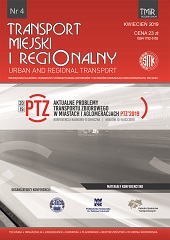
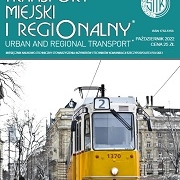 SITK
SITK 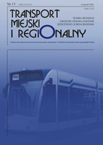 SITK RP
SITK RP 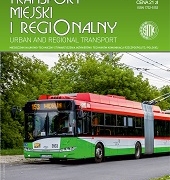 SITK RP
SITK RP 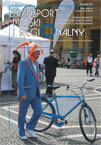 SITK RP
SITK RP 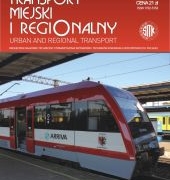 SITK RP
SITK RP 